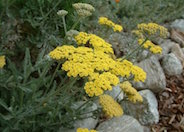
Common name:Yarrow, Milfoil 'Moonshine'
Botanical name:Achillea 'Moonshine'
Long, straight stems with pale yellow flowers are striking on the mats of green to grey-green leaves of this plant, which are flatter and less divided than those of the Achillea millefolium. This Yarrow propagates easily from rooted cuttings or divisions which should be performed in the early spring or fall. Following bloom, one should dead head the plant and divide the clumps when it appears crowded. Introduced by Alan Bloom in the 1950's.
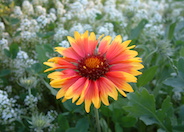
Common name:Gaillardia
Botanical name:Gaillardia pulchella
Flowers of this plant are 3-4" across, with orange petals edged in yellow that frame a rust-colored center. This plant thrives in full sun and needs good drainage. It blooms from June until frost.
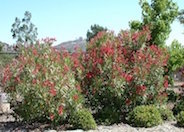
Common name:Oleander
Botanical name:Nerium oleander
Oleander is a dense, upright evergreen shrub that grows quickly to 6' x 4'. Leaves are dark green, leathery, and glossy. Accepts reflected sun. Flowers appear spring to fall. Excellent screen. Good summer color. Native to the Mediterranean.
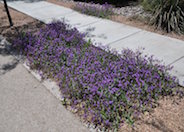
Common name:Verbena
Botanical name:Verbena stricta
This perennial forms a flat mat that covers an area rapidly. It has dark green leaves with clusters of bright flowers that bloom all year. This variety has blue flowers. This groundcover is drought tolerant.
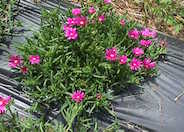
Common name:Purple Ice Plant
Botanical name:Delosperma cooperi
This evergreen succulent is a useful groundcover and has round, green leaves accented by deep purple flowers. It only gets to 3" tall and spreads 1 1/2' wide.
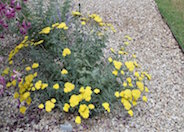
Common name:Coronation Gold Hybrid Yarrow
Botanical name:Achillea X filipendulina 'Coronation Gol
The filipendulina are characterized by dense clumps of upright stems, which show green, densly-hairy leaves similar to those of a fern. The plant is accented with flower heads formed in flat-topped clusters of a bright yellow color.
r The yarrow propagate easily from rooted cuttings or division, which should be performed in the early spring or fall. Following bloom, one should dead head the plant and divide the clumps when it appears crowded.
| Designer: n/a | Mesilla Garden 1 |
Photographer: GardenSoft |
Soils and Compost:
Maintain a two to four inch layer of mulch on the soil surface to reduce weeds, infiltrate rain water, and reduce compaction.
Water Saving Tip:
Different areas of your landscape have different water requirements.
Shrubs need much less water than lawns and drip systems should never be scheduled on the same program with lawns.
Establish separate watering schedules for those areas.
Integrated Pest Management:
Remove irrigation water and fertilizer from areas where you don't want weeds to grow.
